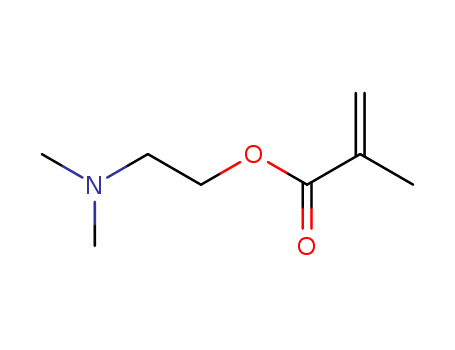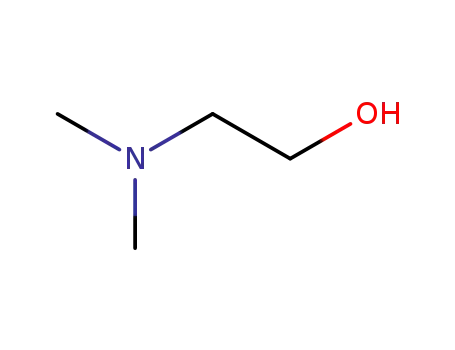

Product Details
|
Air & Water Reactions |
Insoluble in water. |
|
Reactivity Profile |
2-(Dimethylamino)ethyl methacrylate is both an amine and an ester. Amines are chemical bases. They neutralize acids to form salts plus water. These acid-base reactions are exothermic. The amount of heat that is evolved per mole of amine in a neutralization is largely independent of the strength of the amine as a base. Amines may be incompatible with isocyanates, halogenated organics, peroxides, phenols (acidic), epoxides, anhydrides, and acid halides. Flammable gaseous hydrogen is generated by amines in combination with strong reducing agents, such as hydrides. Esters react with acids to liberate heat along with alcohols and acids. Strong oxidizing acids may cause a vigorous reaction that is sufficiently exothermic to ignite the reaction products. Heat is also generated by the interaction of esters with caustic solutions. Flammable hydrogen is generated by mixing esters with alkali metals and hydrides. |
|
Health Hazard |
TOXIC; inhalation, ingestion or skin contact with material may cause severe injury or death. Contact with molten substance may cause severe burns to skin and eyes. Avoid any skin contact. Effects of contact or inhalation may be delayed. Fire may produce irritating, corrosive and/or toxic gases. Runoff from fire control or dilution water may be corrosive and/or toxic and cause pollution. |
|
Safety Profile |
Poison by intraperitoneal route. Moderately toxic by ingestion and inhalation. A skin eye, and mucous membrane irritant. A powerful lachrymator. Flammable when exposed to sparks, heat, open flame, or oxidizers. To fight fire, use alcohol foam, dry chemical, spray. When heated to decomposition it emits toxic fumes of NOx. See also ESTERS. |
|
General Description |
A clear colorless liquid. Less dense than water and insoluble in water. Vapors heavier than air and corrosive to eyes and mucous membranes. May polymerize exothermically if heated or contaminated. If polymerization takes place inside a closed container, the container may rupture violently. Produces toxic oxides of nitrogen during combustion. Toxic by skin absorption, ingestion and inhalation. Used to make plastics and in textiles. |
InChI:InChI=1/C8H15NO2/c1-6(2)8(10)11-7(3)9(4)5/h7H,1H2,2-5H3
High-quality chemical talents, abundant product resources, a perfect supply chain, a reasonable organizational structure, and a scientific management model are the core competitiveness of our company's continuous development. Based on good credibility, cooperation, development, and win-win purpose, after years of efforts, the company has established stable cooperative relationships with more than hundreds of chemical enterprises in domestic and established a good reputation and corporate image in the chemical field.
3-[N-(2-Methacroyloylethyl)-N,N-dimethyl...
The present invention relates to a compo...
A method for making a (meth)acrylamide m...
The invention relates to a process in wh...

2-(N,N-dimethylamino)ethanol


1-amino-3-(dimethylamino)propane


methacrylic acid methyl ester


2-(dimethylamino)ethyl methacrylate


2-methyl-acrylic acid 3-dimethylamino-propyl amide
| Conditions | Yield |
|---|---|
|
methacrylic acid methyl ester; With 10H-phenothiazine; 4-methoxy-phenol; Heating / reflux; Neat (no solvent);
di(n-butyl)tin oxide; at 70 - 101 ℃; Heating / reflux; Neat (no solvent);
2-(N,N-dimethylamino)ethanol; 1-amino-3-(dimethylamino)propane; titanium(IV) isopropylate; more than 3 stages; Product distribution / selectivity;
|
99.2% 87% |
|
methacrylic acid methyl ester; With 10H-phenothiazine; 4-methoxy-phenol; In hexane; Heating / reflux;
di(n-butyl)tin oxide; In hexane; at 70 - 101 ℃; Heating / reflux;
2-(N,N-dimethylamino)ethanol; 1-amino-3-(dimethylamino)propane; titanium(IV) isopropylate; more than 3 stages; Product distribution / selectivity;
|
99.6% 92.3% |
|
methacrylic acid methyl ester; With 10H-phenothiazine; 4-methoxy-phenol; Heating / reflux; Neat (no solvent);
dioctyltin(IV) oxide; at 70 - 101 ℃; Heating / reflux; Neat (no solvent);
2-(N,N-dimethylamino)ethanol; 1-amino-3-(dimethylamino)propane; more than 3 stages; Product distribution / selectivity;
|
84.4% 86.1% |
|
methacrylic acid methyl ester; With 10H-phenothiazine; Heating / reflux; Neat (no solvent);
di(n-butyl)tin oxide; at 70 - 101 ℃; Heating / reflux; Neat (no solvent);
2-(N,N-dimethylamino)ethanol; 1-amino-3-(dimethylamino)propane; titanium(IV) isopropylate; more than 3 stages; Product distribution / selectivity;
|
90 %Chromat. - 100 % 82.5% |

2-(N,N-dimethylamino)ethanol


Methacryloyl chloride


2-(dimethylamino)ethyl methacrylate
| Conditions | Yield |
|---|---|
|
With triethylamine; In dichloromethane; at 0 ℃; for 12h;
|
75% |

2-(N,N-dimethylamino)ethanol

methyl methacrylate

methacrylic acid methyl ester

1-amino-3-(dimethylamino)propane

2-[dimethyl(2-oxido-2-oxoethyl)ammonio]ethyl methacrylate

[2-(methacryloyloxy)ethyl]trimethylammonium chloride

N-benzyl-N,N-dimethyl-N-[2-(methacryoloyloxy)ethyl]ammonium chloride

2-(dimethylamino)ethyl 2-methyl-3-{[3-(morpholinocarbonyl)phenyl]sulfanyl}propanoate
CAS:123-00-2
CAS:1704-62-7
CAS:13709-38-1
CAS:103-76-4